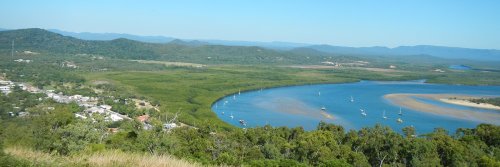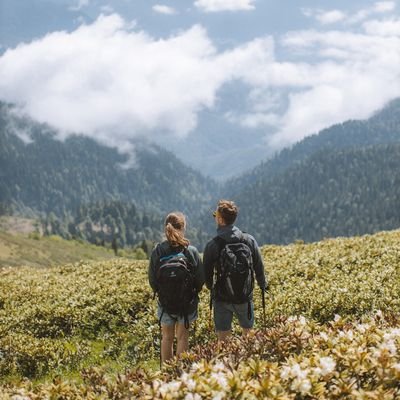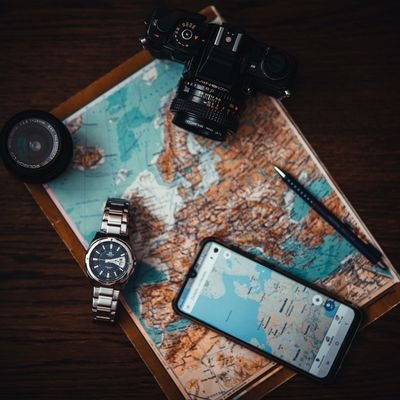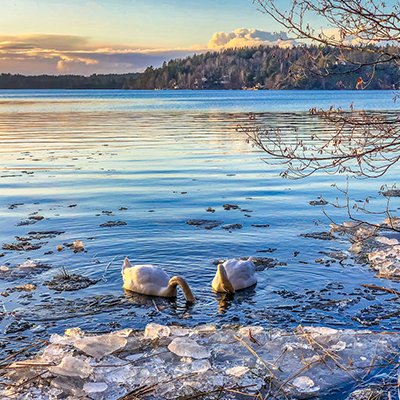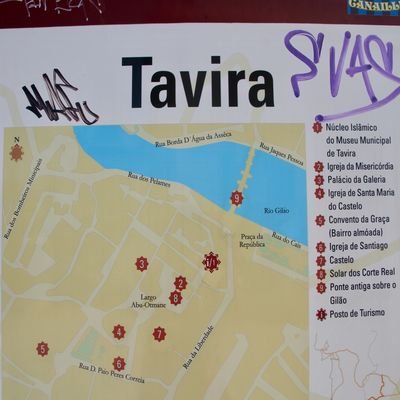327 kilometres north of Cairns (a bit under 4 hours of driving) is Cooktown. The facilities along the sealed road are sparse to none so, as always on a road trip in Australia, have enough fuel and take drinking water and food. A good idea also is to have some music or podcasts downloaded for when the radio stations lose reception.
We had long been intrigued by Cooktown. Based in Palm Cove (25 kilometres north of Cairns) for three weeks, we decided to do an overnighter to Cooktown.
Cooktown is a small town (2,600 odd population) and we visited in February – the Wet Season – so there were few tourists around.
We arrived in Cooktown in time for lunch and stopped at Cook’s Landing Kiosk for lunch. We ordered mackerel, chips and soft drink and then noticed the sign ‘no Eftpos’. We weren’t carrying enough cash so we apologetically handed the drinks back. The cashier gave them back to us - ‘Just drop in $10 or come back for breakfast.’ Ahhh…the trust of non-city dwellers.
Our accommodation was the lovely Sovereign Resort Hotel. The room was spacious and airconditioned and the pool was delightful. We spent a couple of hours lazing beside and in the pool after our drive and initial exploring. The restaurant there was very good too. Our waitress for dinner had a lovely French accent and hailed from a town near Strasbourg. We assumed that she was backpacking or studying but, no, she had been in Cooktown for 3 years, loves it and wants to apply for permanent residency. Never judge a book by its cover!!
We drove up to Grassy Hill and looked at the 1880s lighthouse. The views over Cooktown, the Great Barrier Reef and the Coral Sea are unbelievable. There are also informational signboards discussing James Cook and the radar station that was used in WWII.
A week or so after His Majesty’s Bark Endeavour captained by James Cook was damaged, Cook stood atop Grassy Hill to search for a safe passage north through the Reef. Standing there ourselves and looking at the coral reef clearly highlighted below us, we wondered how the ship ever managed to leave safely.
Cooktown Museum (formerly named James Cook Museum) was a great spot to learn more about Cook and his crew but also about the Traditional Owners of the land, the Guugu Yimidhirr peoples, the history of Cooktown itself and the Sisters of Mercy. There are loads of items on display including: an anchor and a cannon from the HM Bark Endeavour.
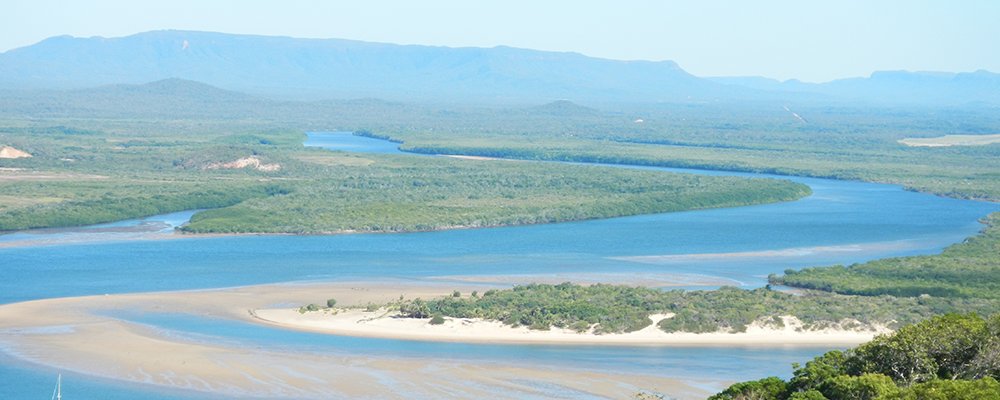
His Majesty’s Bark Endeavour, captained by Cook, struck an unchartered reef off Cooktown on 10 June 1770. He sailed in via a river which he named Endeavour and beached the ship to enable repairs. Cook and his crew left 7 weeks later and life for the Guugu Yimidhirr peoples returned to normal for the next 100 years.
Gold was discovered in the bed of the Palmer River in 1872. News quickly spread and hundreds of miners soon arrived. From 1874 to 1877, thousands of Chinese immigrants arrived. Wharves were built and a tent city evolved to service the Palmer River mining camps. Cook’s Town was officially named Cooktown in 1874.
By the mid 1880s, 30,000 people lived in Cooktown which was then the second largest port in QLD.
I went to a Brigidine Catholic girls’ secondary school which had a Convent on the premises. The school and Convent were demolished a few years after I left so the Sisters of Mercy storyboards struck a chord with me.
The Sisters of Mercy ran the St Mary’s Convent and School. In fact, the Cooktown Museum is housed in the glorious, former Convent building. The history of the 1889 building is a story in itself. The imposing double storey building closed as a school in 1941 and the building fell into disrepair. The National Trust acquired the building in 1969 and raised considerable funds for restoration. HM Queen Elizabeth II arrived on her yacht Brittania in 1970 to open the Museum.
Looking in the former nuns’ dormitories, all I could think of was those poor women from Waterford in Ireland. They must have wondered what had struck them arriving in hot and humid Cooktown! How uncomfortable it must have been for them wearing those heavy wool habits. In those days, only their faces were uncovered.
There are quite a few photos on display and a sobering story about the young girls who boarded at the School. The girls only went home at Christmas – a long journey by train and horseback – so the Nuns raised the girls.
Travel makes an impression on you and, if it makes you reflect, then so much the better. Days after we left Cooktown, I was thinking about those Nuns and the young girls living so far away from home.
Leonie Jarrett, an avid traveller, lives in Melbourne, Australia with her Husband of more than 3 decades, her 4 adult children and her 2 Golden Retrievers. Follow Leonie here.

